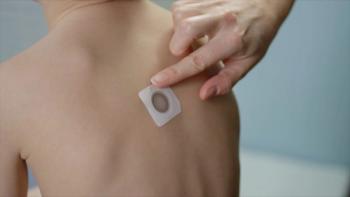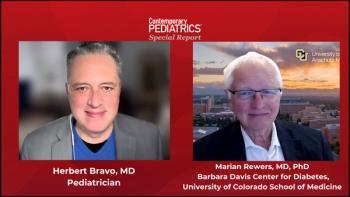
Deadly horizon
A pediatrician warns of the resurgence of vaccine-preventable diseases, urging awareness of their devastating impacts on children's health.
Dear editor,
As a pediatrician who trained 40-plus years ago, I am dismayed that diseases rarely seen anymore due to vaccine success are reappearing.
Unless readers are in pediatric health care and have lived through diagnosing and treating these illnesses, they will fail to understand this reality. “Vaccine-preventable illness” is meaningless without context or personal experience.
Patients arrived at the Emergency Room whimpering, moaning, or crying inconsolably, the babies with meningitis. They appeared lifeless, barely conscious; some were having convulsions. We looked for hemorrhages under their skin. Most had fevers. The soft spot in the center of their heads bulged from extra pressure around their brains from infection. We started IVs, then took blood samples for tests. Many were too sick to cry when needles were placed. If they were stable enough, we did a spinal tap to extract spinal fluid then analyzed it to rule out meningitis, an infection of the tissues that cover the brain. Normal spinal fluid is clear like water dripping; meningitis spinal fluid is often cloudy or pure pus. At times, the spinal fluid was so thick with infection that it got stuck at the tip of the needle, too thick to drip.
With treatment, many infants recovered completely; many did not. They were left blind, deaf, cognitively impaired, or they died.
We could diagnose epiglottitis while walking past the exam room. The sound of children struggling to take every painful breath is unforgettable. There was a croupy “Darth Vader” rasp with every inhalation. They sat pitched forward because of the swelling of their infected epiglottis, the flap of tissue in all of our throats that prevents us from choking when we swallow, drooling because they couldn’t accommodate their own saliva. We knew better than to put a tongue depressor in their mouths. That had the potential to provoke an immediate spasm in their airways and possible death.
All were taken to the operating room, where a breathing tube was placed in their throats, remaining for days until the swelling abated with treatment. Everyone was admitted to the ICU. This disease virtually disappeared when the Haemophilus Influenzae B vaccine was introduced in the 1990s. Haemophilus Influenzae B—the bacterial illness differs vastly from viral flu, for which we recommend a vaccine every fall.
Diarrhea is well known to have a foul odor, but there is no smell like rotavirus diarrhea. Rotavirus, another disease diagnosed by walking down the hospital corridors, because the stench from the massive amounts of stool reached far beyond patient rooms. Luckily, we had access to IV fluids and rehydrated these poor kids from the tremendous amounts of fluid they lost from multiple daily bowel movements. They were too weak and unable to take in enough fluid to keep up with what was coming out. Diarrhea is a common cause of death in other countries, and unfortunately, children still die from it in the United States. Hospital admissions for rotavirus illness have been drastically reduced because the vaccine is so effective.
Babies died from pertussis, or whooping cough, having stopped breathing before the cough developed. Older children and adults cough continuously from pertussis. They feel like they are choking and often vomit or break ribs from the severe coughing fits. Prevalence is increasing because of decreasing vaccination rates. Several children in the United States have died from pertussis so far this year.
Measles, so much has recently been written about its many complications, including fever, pneumonia, blindness, and subacute sclerosing panencephalitis - the heartbreaking and nearly always fatal neurodegenerative measles complication. It is unimaginable to think that now, because of measles vaccine skepticism, “the child with a rash” sitting in the waiting room might actually have measles while potentially exposing all the other patients in that shared space. This is another unfortunate and unnecessary new reality facing clinicians and their patients.
The chest noises of a baby with respiratory syncytial virus (RSV) can often be heard without a stethoscope. The skin between their ribs pulls in, retracting with every breath from effort. Those babies sometimes die from apnea before RSV is diagnosed. There is no treatment. We send them to the hospital because they need oxygen or because they can’t eat and breathe at the same time. Breathing is so difficult that they don’t have the strength to nurse or drink from a bottle. Recently, scientists have developed approaches for RSV prevention in infants as well as a vaccine for adults. They are very effective at preventing or decreasing the severity of this disease.
I cannot summarize the experiences of a lifetime in pediatrics. There are countless other illnesses as devastating as the ones described. Fellow pediatricians are sickened to watch these awful diseases return because trust in vaccines is eroding. Our advice was once respected, relied upon by patients and parents—that is no longer the case. Parents only want the best for their children, but they are confused by “medical information“ from unreliable sources promoting personal agendas and ideologies. Medical professionals have always acknowledged that there are rare, serious side effects from vaccines. However, for the overwhelming majority, vaccines help mitigate or eliminate life-threatening illnesses.
Despite decades of scientific studies, infectious disease expert input, and guaranteed sterility of injections delivered by professionals, we cannot recognize what people in other countries so plainly see: vaccines save lives.
Have those who doubt the efficacy and importance of vaccines ever done a spinal tap on a critically ill infant, tried to start an IV on someone so dehydrated from diarrhea that their veins have collapsed, prayed that their patient is taken to the OR for an endotracheal tube before dying before their eyes, or stayed bedside day and night trying to keep patients alive from diseases that we seldom see now because of vaccines?
Our current path is leading us to an impending health catastrophe. Shame on those who are risking the lives of our children.
Sincerely,
Diane DiMaggio, MD
Newsletter
Access practical, evidence-based guidance to support better care for our youngest patients. Join our email list for the latest clinical updates.






